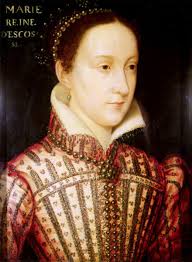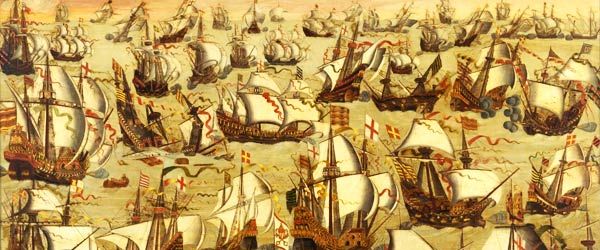The title caught my eye. The juxtaposition of ‘Renaissance’ and ‘prince’ had to mean Machiavelli, so it did. I thought to read it then, to find out how Machiavelli is maligned within and, after all, Elizabeth is another great leader per my presidential reading project. So off I went.

My head whirled at the time and place. What a world was the Tudor court. What a time in the continuing bloody conflict between staunch Catholic and zealous Protestant. This was not a polite doctrinal dispute but one that often ended, quickly, at the end of an axe or pyre for burning dissents alive as soon as possible.
In reading all of this I am reminded again that Henry VIII had very good political reasons for his six wives. Now it is true that the women he selected sometimes were chosen for sexual attraction, but he desperately needed an heir. And that heir would have a better chance of support and survival if it was a he and that he was a Protestant. That he had six wives was a measure of the desperation for an heir as much an anything else, contrary to the vulgarians on the idiot box who can think only of genitalia, telling us some much more about themselves than Henry.
I learned a few things, against the odds as explained below under vinegar. Elizabeth’s half-sister Mary Tudor, who ruled for five years as Mary I of England, is not Mary Stuart, Queen of Scots, though the confusion is invited because Mary Stuart, Queen of Scots, was styled Mary I of Scotland and since there were those who thought she ought to be on the English throne, she was sometimes thus referred to as Mary I of England, too. These two Marys were cousins of some remove. Mary Stuart, Queen of Scots, descended from Henry VII (father of Henry VIII). Henry VIII was father to both Mary Tudor with Katherine of Aragon and Elizabeth Tudor with Ann Boleyn. Mary was 15 years older than Elizabeth. Neither had anything like a normal childhood.
Elizabeth Tudor, as a child, survived the court intrigues in part because she was a girl and so not considered a threat by any of the court factions. Her younger brother, Edward was the presumptive heir and attention focussed on him. At one time or another, Henry VIII, while he still lived; Edward VI, the boy king; Lady Jane Grey, and Mary I either disinherited or denounced Elizabeth. By disinherited I mean excluded her from royal succession. Sometimes this exclusion was done though an act of parliament, and at other times by a decree. Then there would occur a shift in court politics, or a rumble in European affairs and restoring Elizabeth seemed politic.
Edward VI was the first king raised and educated into Protestantism as was Elizabeth, and the first monarch to come to the throne a Protestant. MaryTudor, the older sibling, was reared by her mother, the very pious Spaniard, Katherine, into Iberian Catholicism, that of the Inquisition. If there were variations in Catholicism, this was the take-no-prisoners version. The best way to save the soul of sinners is to kill them immediately to stop the sin, and make things easier for them in the afterlife. If that sounds wacko, read more about the Tea Party to find contemporary parallels.
The boy King Edward was never robust and on his deathbed at 15, he signed a paper passing the crown onto Lady Jane Grey, who had reared him and nursed him in his last days, his mother, Jane Seymour, had died in his birth. Whether Edward knew what he is doing or not when he signed, there were many who supposed the crown was not his to give, and Lady Jane Grey’s interregnum lasted 9 days. To save herself, though very Protestant, she professed allegiance to Mary. It did not save her.
Mary Tudor became Mary I for five years. She pulled off a diplomatic coup with a political marriage to Phillip of Spain, heir to the Castilian throne. Phillip spend a year in London where he counselled her to show moderation to Protestants. Though very much a Catholic himself, the point of the marriage was to secure a powerful English ally against the French. That would not work if the English turned against each other in a religious war. Being a seaman himself, he also introduced reforms into the Royal Navy in ship building and in promotions. Ironic, no? This is the same Phillip who dispatched the fabled Armanda against the Royal Navy he had helped create while Elizabeth, the women he shielded, was queen.
Matrimonial politics makes strange bed fellows, for while the conjugal alliance with Phillip of Spain corralled the French for a time, it was not popular with the English public, nor with the many nobles who preferred one of their own in that bed. Even English Catholics were less than enthusiastic for a Spanish king. Note, he was accorded the ceremonial title king, but the marriage contract specifically denied him any authority, but still there was that word ‘King.’
Elizabeth bent to Mary’s will, even proclaiming herself a good Catholic in a letter. Mary did not believe the profession but it was enough to paper over the differences. There were Protestant plots to do away with Mary and they turned their eyes to Elizabeth as a figurehead. She can hardly have failed to know this, but some how kept a distance from it. When one such plot was revealed, Mary sharpened an axe for Elizabeth’s neck, but Phillip urged restraint. Why? He had a second reason. Mary Stuart that Queen of the Scots was the other most credible claimant to the English throne and she was betrothed to the French King. If Mary Tudor I were to die, and Elizabeth was dead, that would make Mary Stuart, Queen of the Scots, the inside favourite for London, thereby undoing the English-Spanish alliance he had devoted himself to securing. So Elizabeth lived, and that kept Protestant hopes alive, as well.
Then Mary succumbed in an influenza epidemic and there was no one else but Elizabeth for the Protestants. While the author stresses Elizabeth’s solid education, linguistic ability, honed survival instinct, it must also have been the case that there chancers around who hoped to manipulate and use this girl-queen, just as such men, including members of the Grey family, who manipulated Edward VI.
Be that as it may, Elizabeth did everything possible in word and deed to emphasise the smooth continuity of Tudor monarchs from Henry VIII, Edward VII, Mary I to Elizabeth I. While the most Catholic elements of Mary’s rule were set aside, some was preserved in a gesture of moderation. Though it was never enough either way. The Catholics wanted a Catholic queen and all the Protestants put to the sword, and the Protestants reciprocated.
 Mary Stuart
Mary Stuart
Elizabeth’s reign was long, and domestic, national, and international politics swirled around in admixtures. She flirted with men, but found having suitors secured a kind of stability, rather like Penelope and that weaving. Mary Stuart kept plotting and finally was entrapped, and went to the stump. Many others went, too. Yet no one uses Elizabeth’s name as a shorthand for murderousness. Odd that. Of course, Henry VIII oversaw the slaughter of more than 50,000 Catholics who were his subjects and his royal oath pledged him to protect and defend his subjects. Hmmm.
Francis Walsingham created MI5 and MI6 in all but name, and ferreted out plotters, and no doubt fomented some of them to justify an increased security budget.
When Calvinist rebels who attacked the Spanish in the Netherlands appealed to Elizabeth for help, she being the leading Protestant monarch in Europe, the other major one was in Sweden, Elizabeth gave just enough help to keep the Spanish tied down in the Netherlands, but never enough to bring about a decisive result. Better to have Spain tied down in the Netherlands than to have it freed from that need by a decisive Calvinist victory. Who said ‘cynical’?
There were many approaches of marriage both international and national. In light of the popular reaction to Mary Tudor’s marriage to Phillip, there was no chance of a foreign husband, but let the suitors come… In time the Virign Queen used that claim to identify herself with both the Madonna, and with England as her immaculate child. The author goes into the symbolism of this at length, the jewellery, the portraits, the gild.
But the point remains that there was no heir. That must have bothered a lot of people who could foresee a gathering of the carrion when she died. And she could have died at any time, falling down stairs, in an influenza epidemic, by tetanus from a small cut, bad water while travelling, the list goes on. Those who supported her the most, these had the most to lose if instability followed her death. They must surely have thought about this, and they must surely have taken out insurance of some kind. The author reveals nothing of this.
The one chapter where the author does dig concerns Elizabeth’s speech at Tilbury when the Spanish Armada was approaching.
 That armada.
That armada.
Hilton concludes, mostly by assertion, that Elizabeth did not give the speech widely attributed to her (See William Safire, ‘Lend me your ears’). That she went to Tilbury to consult with the admirals and generals is documented, but not that she spoke or what she said if she spoke. The author concludes the speech was retrospectively credited to her a generation later, and stuck. I do like that kind of digging, though I was disappointed at the conclusion, but it seemed to rest largely on the absence of evidence, and as Donald Rumsfeld taught us, the absence of evidence is not evidence of absence.
Oh yes, Machiavelli is mentioned several times and is shown in one of the coloured plates in this handsomely produced book. The mentions are gratuitous and superficial. Par for the course.
Lisa Hilton is a successful author with many titles to her credit. The back cover of this tome bears this blurb: ‘Game-changing…how history should be written,’ Andrew Roberts. I expect this the Roberts with a lengthy and laudatory entry in Wikipedia where he is described as a British historian and journalist, and a FRSA and FRSL, dignities so far above my station that I know not what they are. Yet I dare to dissent.
The experience of reading this book was like watching squeal televisions programs, where gangs of immature adolescents shriek and squeal at each others’ dresses, make-up, hot-rods, guns, and general vulgarity. It is my first squeal and shriek book. Much more attention is lavished on the gowns, the regalia, the jewels, than on the forces in play that lead to the events at which the gowns are worn. It might also be compared to one of those celebrity magazines I pass by at supermarket tills, combining glitz and gossip a mile wide and an inch deep.
The book starts in the middle; is breathless throughout; opinionated without being informative. It makes no concessions to the reader’s desire for an orderly exposition of the facts of Elizabeth’s life. Instead it replicates the kaleidoscope of the times in blizzards of name-dropping, as if all readers already know all of this and are waiting for the writer to tell us what to think. She does tell us often with that dreadful adverbs: obviously, reasonably, rightly, finally.
I made my own chart of the principal characters so I could follow, to some degree, our breathless correspondent as she darts from one subject to another, seldom leaving a transition, internal summary, or any other signpost behind. What would Jacques Barzun say about this? Probably not that it is how history should be written.
That there is contention over facts or interpretations is taken as license by this writer, not as a matter that requires careful adjudication. There is little evidence in the text of the impact of studying the lengthy bibliography at the back. It is rather as the script writers say: based on a true story. Sometimes passages in quotation marks have a footnote and sometimes they do not. The footnotes are often to whole books, and not to passages, page, or specific points.
 Lisa Hilton
Lisa Hilton
‘What he was accused of compassing was the possession of two Tudors, the king as his charge and Elizabeth as his wife.’ Huh? ‘Compassing’? It has an archaic meaning as ‘contriving’ but really, how many 21st Century readers will get it? I did not. This is one example of many instances where odd words, usually long, are used. All those students I have read who thought big word was a big idea, they came to mind.
Skip to content
